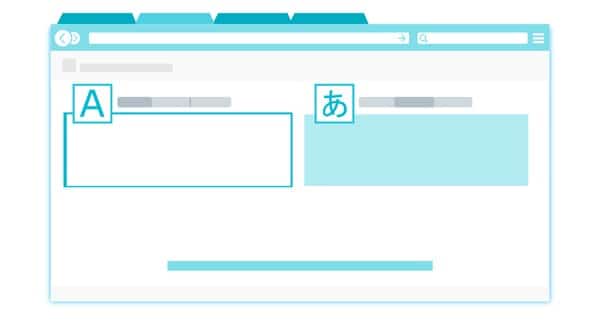If you’ve ever taken a foreign language course, teachers and professors implore students not to use Google Translate as a tool for completing assignments. Still, many students go ahead and put their English essays into the online machine in order to get their nicely translated Spanish essay out to turn in to the teacher. The only problem is that most teachers can tell when a student has used an online translator like Google Translate since more often than not, the translation is inaccurate and ungrammatical. If Google Translate poses a problem in education, how much more of a problem is it for professionals working across languages and cultures, and what are the pros and cons of Google translate vs. professional translation services?
The Pros and Cons of Google Translate in the Professional World of Translation
The pros and cons of Google translate not only impact professional translators in the language service industry, but rather anyone who chooses to use it as a translation tool. Certainly, online public access to a free, quick, and relatively accurate translation method represents significant progress in translation technology. But when one directly compares translation quality and accuracy using Google Translate with that of an experienced human translator, there is no real comparison.
The way that Google Translate works is that it uses frequency of word pairs between two languages as a database for its translations. Although this works well in some cases, often this means that it cannot put a translation into proper context without the help of a human. In fact, it may in some circumstances come up with outright errors or extremely awkward literal translations. While these can often be amusing, there is nothing funny about making mistakes on serious business document translations or when critical information is communicated incorrectly. So what are the pros and cons of Google translate vs. professional translation?
The Pros
- Google Translate is free. An experienced professional translator can sometimes be costly, but remember you get what you pay for.
- Google Translate is quick. One of the main advantages of Google Translate is that it is very fast. In fact, a human translator(s) cannot compete with the speed nor, as a result, the quantity of translations that Google Translate is able to perform. In an average workday an experienced translator can translate about 2,000 words maximum (300-400 words/hour) depending on the difficulty of the text. In contrast, Google Translate is able to produce a translation with the same number of words in just seconds!
- Google Translate uses a statistical method to form an online translation database based on language pair frequency. Google Translate uses a statistical approach to build an online database for translations that are often (but not always) produced by humans and are available online.
The Cons
Cons
- With Google Translate the meaning can be “lost in translation” because there is no way to incorporate context. The complexity of the text, as well as any context which cannot be interpreted without a true knowledge of the language, makes the likelihood of errors greater. Direct translation is common with Google Translate and often results in nonsensical literal translations while professional translators take great pains to ensure that this does not happen by using well-established online glossaries, back translation methods, proof readers and reviewers.
- The quality of translation is dependent on the language pair. Which source and target languages are involved also affects the quality of the translation. Since Google’s web-based translation database is built primarily from existing online translations, common translations for languages e.g. Spanish or English tend to be more accurate while translations for other languages that are not as available in Google’s database are less likely to be accurate.
- Google Translate often produces translations that contain significant grammatical errors. This is due to the fact that Google’s translation system uses a method based on language pair frequency that does not take into account grammatical rules.
- Google Translate does not have a system to correct for translation errors. There is no way of reporting errors in order to avoid having them repeated, nor is there a way to proof read what has been translated unless one is fluent in both the source and the target language.
Let me demonstrate these issues more clearly by providing you with an example of a Google translation from Spanish into Greek and English for a common Spanish expression. The phrase “Me estas tomando el pelo” means “you’re kidding” in Spanish, but Google translates this as “Νέου Πλάκα μου κάνεις” in Greek or “New Kidding” in English. Of course this is not a terribly damaging error, just cause for confusion. Let’s look at what happens though when Google Translate is used for something more serious with greater consequences.
Recently, there was an incident involving the Malaysian Defense Ministry, who decided to use Google Translate to produce an English version of its official website. The English version of the website was soon taken down after several blatant mistakes went viral on Twitter and Facebook causing quite a bit of embarrassment. Among the more amusing mistranslations were details regarding the staff’s “ethical” dress code. For example, that women in the ministry should not wear “revealing clothes” was translated as “clothes that poke the eye,” a literal translation of the Malay phrase “pakaian yang menjolok mata.” But the most damaging translation error was the following sentence regarding the ministry’s history: “After the withdrawal of British army, the Malaysian Government take drastic measures to increase the level of any national security threat.”
Now That We’ve Listed the Pros and Cons of Google Translate – Do The Pros Outweigh The Cons?
So as you can see the pros and cons of google translate make it clear that, although you may sometimes have success using Google translate, you would not want to use it for anything of great importance without checking to make sure that there are no errors in context, grammar or otherwise. That is a job for a professional translator. If there is no other choice and you need to translate something which will not impact your life or business in any major way then go ahead and use Google Translate. Or if you must use Google Translate, make sure that you have a native speaker proof read and review the text!
About Language Connections:
Language Connections is one of the top language service companies in the US. Over the last 30 years, we’ve focused on providing the best business translation services, interpreting services, as well as interpreter training and customized language training programs. In addition to top-tier corporate language training, we offer certified corporate interpreters and professional business translation services in 200+ languages. Our network includes linguists with backgrounds in all major industries. They’re ready to meet your needs, whether they’re for technical translation services, legal translation, government translation services, international development translation services, education translation services, life sciences translation, or something else. Reach out to us today for a free quote on our cost-efficient and timely translation services, interpreters, or other linguistic services.
Language Connections Inc.
2001 Beacon Street, Suite 105,
Boston, MA 02135
Phone: +1-617-731-3510
Email: service@languageconnections.com



